Healthy & Sustainable Landscapes Need A Professionally Installed Irrigation System
A properly designed and installed automatic irrigation system in your Jacksonville area home or business, provides countless benefits to your lawn, garden and landscape. It is a valuable insurance policy, that almost guarantees the success of any landscape in the North Florida. It eliminates the time and hassle of hauling hoses and sprinklers haphazardly around your property, hoping you have everything covered. A well-designed irrigation system can often reduce the amount of water you would normally use watering by hand. A professionally installed Irrigation system distributes a precise, intentional amount of water, to the right locations for a specific scheduled amount of time. No more wasting water by over-watering or wasting time by doing it yourself with a hose. Irrigation systems by Stewart and Stewart Landscaping of Jacksonville are designed to do it the right way, every time.
We install water-efficient, Rain Bird irrigation systems that include low precipitation rate nozzles and water-conserving drip irrigation to insure the health and sustainability of your new or existing landscape. Each system is custom designed to your planting plan, ensuring the correct amount of water is properly delivered to each specific plant. Systems are operated by an easy to use Rain Bird electronic controller that can be set to water at specific times, on certain days and for variable durations. It’s no secret that in North Florida a properly designed and installed irrigation system by Stewart and Stewart Landscaping of Jacksonville, is a solid investment for improved water management and savings. It will ensure that your new and existing landscape plantings will thrive through all the seasons of the year.
Let us show you how our Rain Bird irrigations systems can benefit your home or business. Our highly trained irrigation experts are only a call or click away.
Call: (904) 886-0353
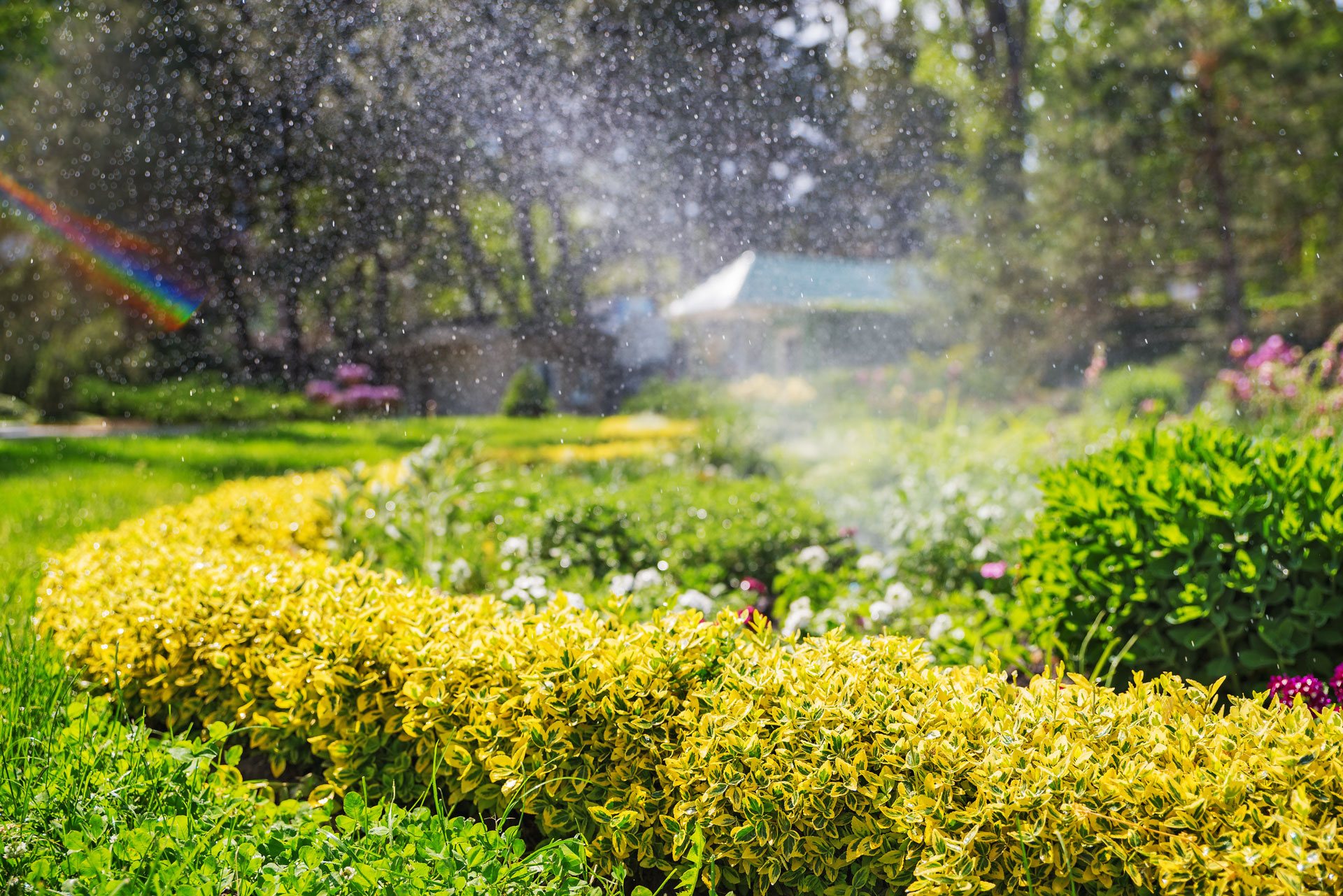
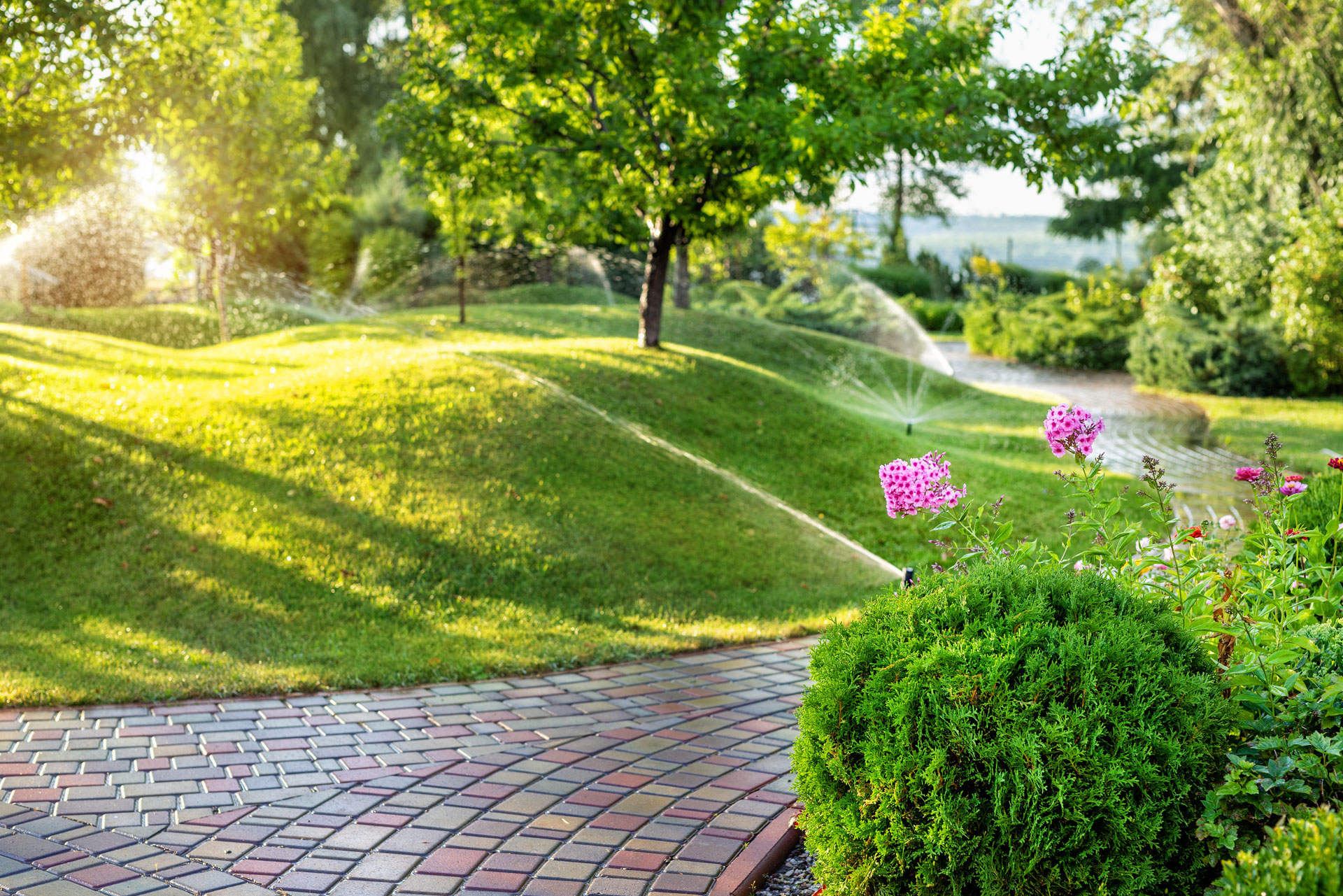
About Your Irrigation System
With Stewart & Stewart Landscaping, your completely automated system is designed by a licensed Irrigation Specialist and consist of a Controller, a Backflow Preventer, In-line Valves, a Rain Sensor and three types of spray heads (Risers - Pop-up Sprays - Rotor/Impluse)
Controller Programmable watering time and days. Battery backup.
Backflow Preventer ‘U’ shaped device surrounded by insulation which allows water to flow in one direction, but does not allow flow in the reverse direction, thus preventing any contaminates from entering the potable water supply.
In-Line Valves Anti siphon valves set below soil level to distribute water to separate zones within the irrigated area. The number of zones is determined by the number of heads and the gallons per minute (b.p.m.) on each valve.
The Rain Sensor Device usually mounted on a riser near the valves. When enough moisture is detected, the device will shut off the system until adequately dried.
Risers Placed along foundation and planter areas. Designed to distribute spray over shrubs and plants in designated target area.
Pop-ups In ground sprays designed for smaller turf and planter areas and along sidewalks and walkways.
Rotors High volume heads used in larger turf areas with a gradual sweeping motion. Adjustable arc and radius.
The following ‘Adjustment Guide’ provides direction for maintaining and making basic adjustments to your system. Every system should be periodically checked the presence of potentially costly leaks and to ensure proper coverage.
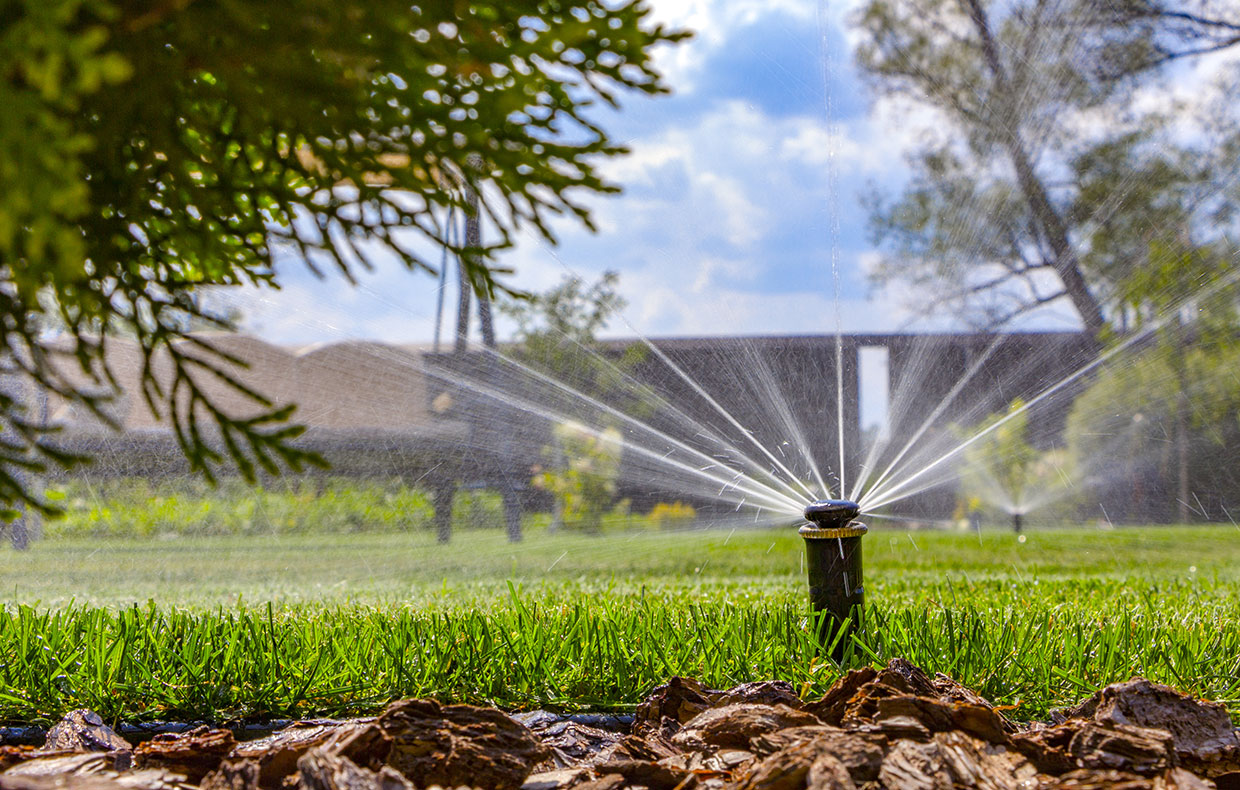
Spray Heads
Spray Heads are relatively simple to troubleshoot. Below are the most common problems that may be encountered.
Misting - This is a result of excessive water pressure. Reduction of water pressure may be accomplished in one of two ways:
- Using the flow control on the remote control valve.
- Installing a pressure regulator before or on the valve.
Inaccurate Pattern - This is usually caused by some type of blockage, either in the nozzle itself or in the screen. Only water, air, or a soft bristled object should be used to clean the nozzle. Only water should be used to clean the screen.
Leaking Around the Stem (also known as ‘blow by’) - This is usually caused by debris between the wiper seal and stem. A quick way to solve this problem is to step down lightly on the stem while the sprinkler is in operation. This causes water to flush quickly between the stem and cap, taking debris with it. If this doesn’t work, the cap is probably damaged and will need to be replaced.
Impact Sprinklers
All impact sprinklers work in the same basic fashion. This includes impact style rotors as well as most of the different styles or brands available today. The following is a quick overview of how an impact sprinkler works.
Operation - Water enters the bottom of the sprinkler through the bearing nipple, proceeds up through the body and exits out the nozzle. When the water hits the arm to pivot away from the water stream, creating tension on the arm spring. When the spring tension is stronger than the force against it, the arm moves quickly toward the water stream and “impacts” against the body. This “impact” causes the sprinkler to turn in a very consistent manner. This is from where the term “impact” was derived.
All Rain Bird sprinklers are Water Lubricated. This common trait is very important when troubleshooting impact sprinklers.
The worst thing that can be done to an impact sprinkler is to apply a foreign lubricant. This includes oil, WD-40, silicone, teflon, pipe dope, etc. These foreign lubricants might initially make the sprinkler work properly, but will actually cause the sprinkler to wear out much faster. Foreign lubricants attract dust and debris. When lubricants are applied to the bearing washers, an oil base can form on the washers. This allows the sprinkler to spin freely for a short time only! Over time, dust is attracted to the washers on the bearing stack. This causes additional friction on the washers and causes them to wear out much faster. If foreign lubricants have been applied, all of the washers and seals will need to be replaced. It is also a good idea to clean the brass parts by a process called bead blasting.
The ability to rebuild an impact sprinkler is one of its biggest advantages. Impact sprinklers are totally serviceable in the field. In most cases, by simply replacing worn parts such as; washers, seals, springs, etc., rebuilt sprinklers can be back in operation for several more years of reliable service.
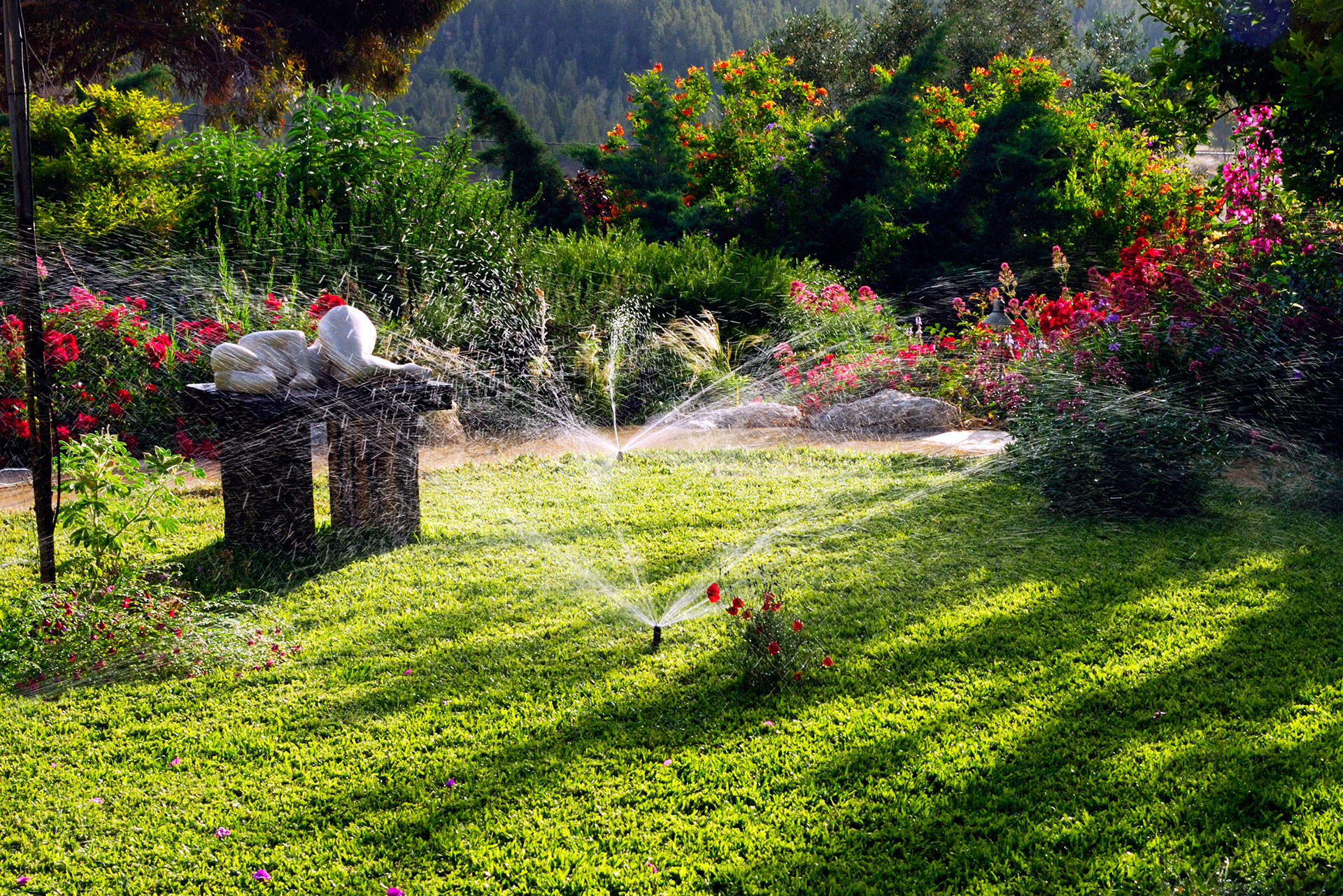

Troubleshooting
First check for the obvious:
- Turf obstruction
- Dirt/debris in case or nozzle
- Excessive water pressure
- Broken arms, trips, etc.
- Foreign lubricants
- Inadequate water pressure
Common Problems
The sprinkler is stuck or won’t return - The most common reason for this problem is water pressure that is too high or low. Impact sprinklers can fail under either scenario. To determine what the operating pressure is, a pitot tube and a pressure gauge may be used to get a pressure reading at the head. This is done by placing the end of the pitot tube in the water stream, as close to the nozzle as possible. It is important to not place the end of the pitot tube inside of the nozzle opening as this can scratch the inner wall of the nozzle, as well as produce an inaccurate pressure reading. If the inner wall of the nozzle is scratched, the distribution pattern may be effected. Any of the previously mentioned problems can result in a non-rotating sprinkler.
The sprinkler is leaking - This problem is normally caused by worn washers and seals that should be replaced.
The sprinkler is not throwing as far as it should - This problem is usually caused by some type of blockage, either in the nozzle or the inlet screen. Cleaning the nozzle with air, water or a soft bristled object (such as a pipe cleaner) should resolve the problem. Note: Do not use wire or a screwdriver as this may scratch the nozzle.


Adjustment Guide
500 Plus Series Rotor -Installation
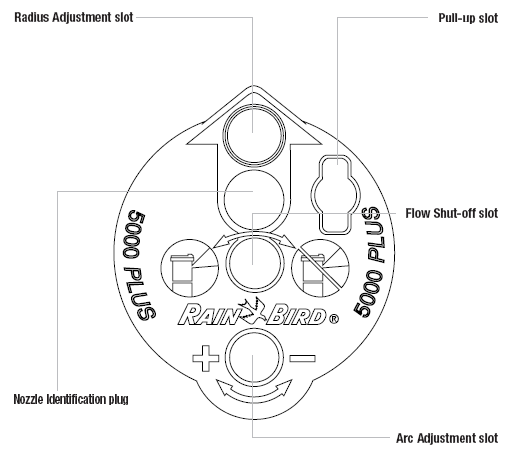
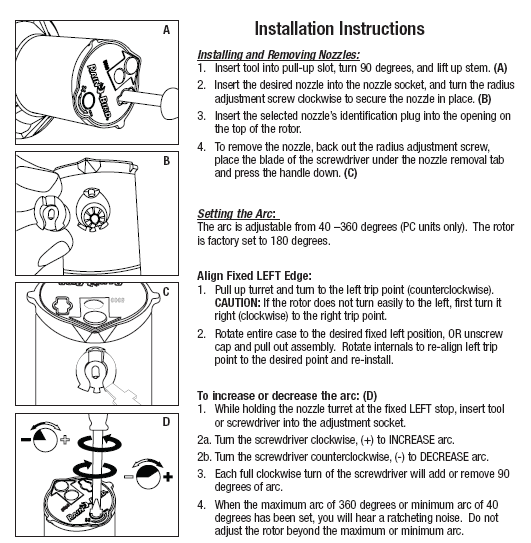
ESP Modular Controller- Programming & Operation
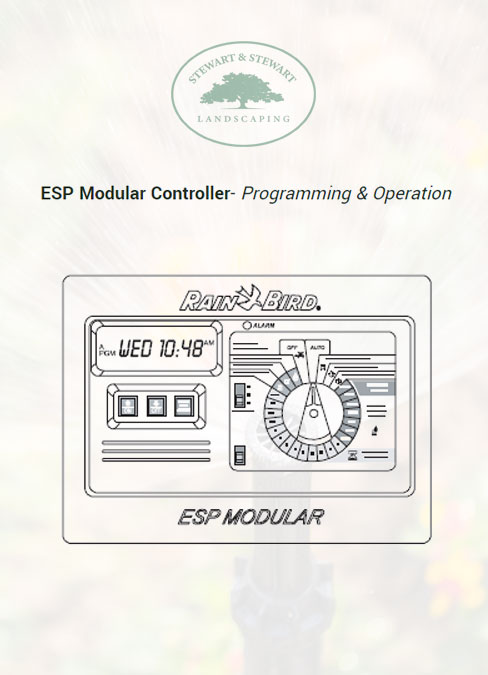
Download the Programming & Operation Guide
